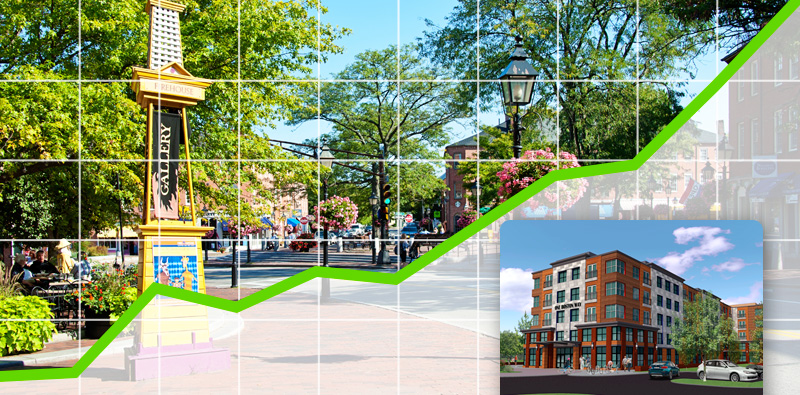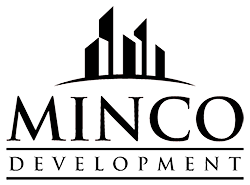How Smart Growth will boost economic development in Newburyport

The arguments in favor of Smart Growth development boils down to three basic points:
- Smart Growth saves
- Smart Growth makes
- Smart Growth counteracts the costly and unsustainable effects of urban sprawl.
As Newburyport finds itself in the midst of yet another municipal budget battle, the need for more revenue streams once again becomes apparent. The establishment of a Smart Growth District around the Route 1 traffic circle and the MBTA commuter rail station would boost city finances by increasing tax revenues, securing financial incentives from the state, attracting new businesses, and revitalizing lots that currently contribute no tax dollars to the city.
If you have read our previous posts, you know Chapter 40R, the state’s Smart Growth statute, was enacted in 2004, to counteract the costly and unsustainable effects of urban sprawl by creating compact, transit-oriented, and vibrant neighborhoods where businesses and residents thrive side by side.
This quote by Smart Growth America hits the nail on the head:
“Smart Growth communities, with their emphasis on walkability, mixed uses, access, and environmentally sound design, are the communities that will power our economy through the 21st century. Not only are these communities more efficient in their use of resources and thus less costly to build and maintain, but they create highly desirable living and working environments that fuel creativity, innovation and economic growth.”
Besides being a key goal of the city, Smart Growth also enjoys the open support of several city councilors as well as the Greater Newburyport Chamber of Commerce & Industry.
In a letter to Mayor Donna Holaday–herself a longtime proponent of Smart Growth–Kim Gobbi, past chair of the Chamber of Commerce Board of Directors, outlined the positive economic impact of a City Council vote in favor of the creation of the city’s first Smart Growth District (the vote is expected to take place in June).
Pointing out the area is one of few remaining pieces of land large enough to generate significant tax revenue to the city, Gobbi concluded, “We enthusiastically endorse this project.”
The approval of the Smart Growth ordinance would allow MINCO to move forward with our proposed Smart Growth development, One Boston Way, which includes 80 apartments and 3,500 square feet of shared office space and live-work units. Located off Parker Street, only steps from the MBTA commuter rail station, One Boston Way would also preserve 9 out of 11 acres as open space and contribute to the reinvigoration of what is now an underutilized parking lot.
City Councilor Jared Eigerman, who co-sponsored the Smart Growth ordinance with fellow Councilor Meghan Kinsey, called the current use of the area around the Route 1 traffic circle “a wasted opportunity” that would benefit greatly from multi-story, multi-family buildings with ground-floor commercial uses.
With graduate degrees in city planning and law in addition to many years of experience working with Smart Growth policy, he told us, in part:
“Development of this sort would not compete with our existing shopping area on Storey Avenue, nor with our historic, finely grained downtown…the city simply lacks enough tax revenue to support even basic public services, like sidewalks and schools. The new district is planned to produce a net increase in tax revenues from the property around the traffic circle and near the train station. The MBTA lots, of course, currently produce no taxes at all…”
Another city councilor, Bruce Vogel, said Smart Growth could spur the development of a small, full-service community within walking distance to new residences–not unlike the heart of Newburyport, in other words.
He continued, “By embracing these ‘modern-day’ approaches to development, the City and the Chamber will be able to market the Business and Office Park in a manner that will attract solid and beneficial businesses that will provide job opportunities and economic stability.”
In fact, case studies show pedestrian-friendly communities attract and sustain small business. Smart Growth also capitalizes on the concept of “agglomeration economics,” the idea that economic activity increases when there is a cluster of economic activity. According to Smart Growth America, “Businesses and people working in close proximity fosters creative contacts, provides markets for specialized services, provides greater access to labor and eases the transfer of knowledge.”
In contrast, urban sprawl has a negative impact on economic vitality, increasing the cost of travel, road and utility maintenance and leading to the loss of productive agricultural and forestry lands as well as natural resources that support tourism and wildlife related industries.
What else?
Smart Growth also creates communities that appeal to empty nesters and young professionals who increasingly reject the suburban lifestyle, favoring instead walkable communities in close proximity to jobs, entertainment, and restaurants. A Smart Growth District would increase Newburyport’s dwindling stock of rental units and create a range of housing options that would retain local talent and allow a variety of demographics to stay in or move to the community.
Another economic benefit, as we’ve pointed out in previous posts, includes the direct cash payments from the state. The approval of a Smart Growth Zoning Overlay District means the city qualifies for zoning incentive payments of up to $600,000 in addition to a density bonus of $3,000 per unit. The payments come with no strings attached, enabling the municipality to allocate the money as it sees fit.
Let’s sum it up: More than 30 municipalities in the Commonwealth have taken advantage of Smart Growth zoning to realize sustainable economic development. By avoiding the pitfalls of urban sprawl, they have set themselves up for success, turning neighborhoods into economic engines, while, at the same time, honoring the value of open space.
It sounds like an ideal fit for Newburyport.



